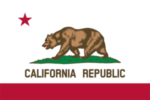Understanding Lane Types and Their Uses
When driving, understanding the various types of lanes and their proper use is critical to ensuring smooth traffic flow and road safety. Each lane type serves a specific purpose, and recognizing them helps prevent accidents and violations. Below, we explore key lane types commonly found on roads and highways.
1. Passing Lanes
The passing lane is typically the far-left lane on multilane roads. It is meant for overtaking slower-moving vehicles. Always remember to pass safely and return to your original lane after passing, as lingering in the passing lane can block traffic and increase the risk of accidents.
Key Tips:
- Only use the passing lane for overtaking.
- Make sure to signal and check your blind spots before changing lanes.
- Return to the right lane after passing.
2. Carpool/High-Occupancy Vehicle (HOV) Lanes
HOV lanes are reserved for vehicles with multiple occupants, such as carpools, buses, or motorcycles. These lanes often run parallel to regular traffic lanes and are marked by a diamond symbol. They are designed to reduce congestion and encourage shared transportation.
Requirements to Use HOV Lanes:
- You must have the required number of passengers (often two or more).
- Special decals are required for low-emission vehicles.
- Motorcycles can use HOV lanes unless otherwise posted.
3. Center Left Turn Lanes
Found in the middle of two-way streets, center left turn lanes are designed for vehicles turning left or making U-turns. They help prevent rear-end collisions by allowing vehicles to stop in the lane while waiting to turn, thus avoiding obstructing traffic.
Usage Tips:
- Only enter the center left lane when turning left.
- Signal before entering the lane.
- Check for traffic from both directions before turning.
4. Turnout Areas
Turnout lanes are often found on two-lane roads where slower-moving vehicles can pull over to let faster vehicles pass. This is especially important on narrow or winding roads where overtaking is dangerous.
Proper Usage:
- Use turnouts when driving slower than the speed limit or when there are five or more vehicles behind you.
- Do not use turnout lanes for stopping unnecessarily.
5. Bicycle Lanes
Bicycle lanes are dedicated lanes for cyclists and are marked by a solid white line. These lanes help separate cyclists from vehicles, enhancing safety for both.
Types of Bicycle Lanes:
- Standard Bike Lanes: These are adjacent to the road and marked by a solid white line.
- Buffered Bike Lanes: Include additional markings for more space between cyclists and vehicles.
- Bike Boulevards: Streets where bicycle traffic is prioritized.
- Separated Bikeways: Physically separate cyclists from motor traffic using barriers or designated paths.
Always be cautious when approaching or crossing bike lanes, and never park or stop in them unless permitted.
Lane Markings and Their Meanings
Lane markings are essential for guiding traffic and ensuring road safety. Understanding these markings helps drivers stay in the correct lane and follow traffic rules effectively.
Single Solid Yellow Line
A single solid yellow line marks the center of a road with two-way traffic. It indicates that passing is not allowed if the solid yellow line is on your side of the road.
Double Solid Yellow Lines
Double solid yellow lines indicate that passing is not allowed from either direction. You should stay to the right of these lines at all times. However, you may cross them when turning into a driveway or making a legal U-turn.
Broken Yellow Line
A broken yellow line allows for passing if it is next to your driving lane and conditions are safe for doing so.
Single Solid White Line
A single solid white line marks traffic lanes moving in the same direction. Crossing this line is discouraged, but not illegal.
Broken White Line
A broken white line separates traffic lanes going in the same direction and permits lane changes.
Safety Tips for Changing Lanes
Changing lanes can be a simple maneuver, but it requires careful attention to avoid accidents. Follow these steps when changing lanes:
- Signal your intention to change lanes.
- Check your mirrors for traffic behind and beside you.
- Look over your shoulder to check your blind spot.
- Ensure there is enough space in the new lane before merging.
- Do not change lanes in an intersection.
Staying in your lane as much as possible is the safest option. Avoid weaving in and out of traffic, as it can lead to accidents.
Conclusion
Understanding lane types and their proper use is crucial for safe driving. By following lane rules, checking lane markings, and being cautious while changing lanes, drivers can help prevent accidents and ensure a smoother, safer driving experience for everyone on the road.






Recent Comments